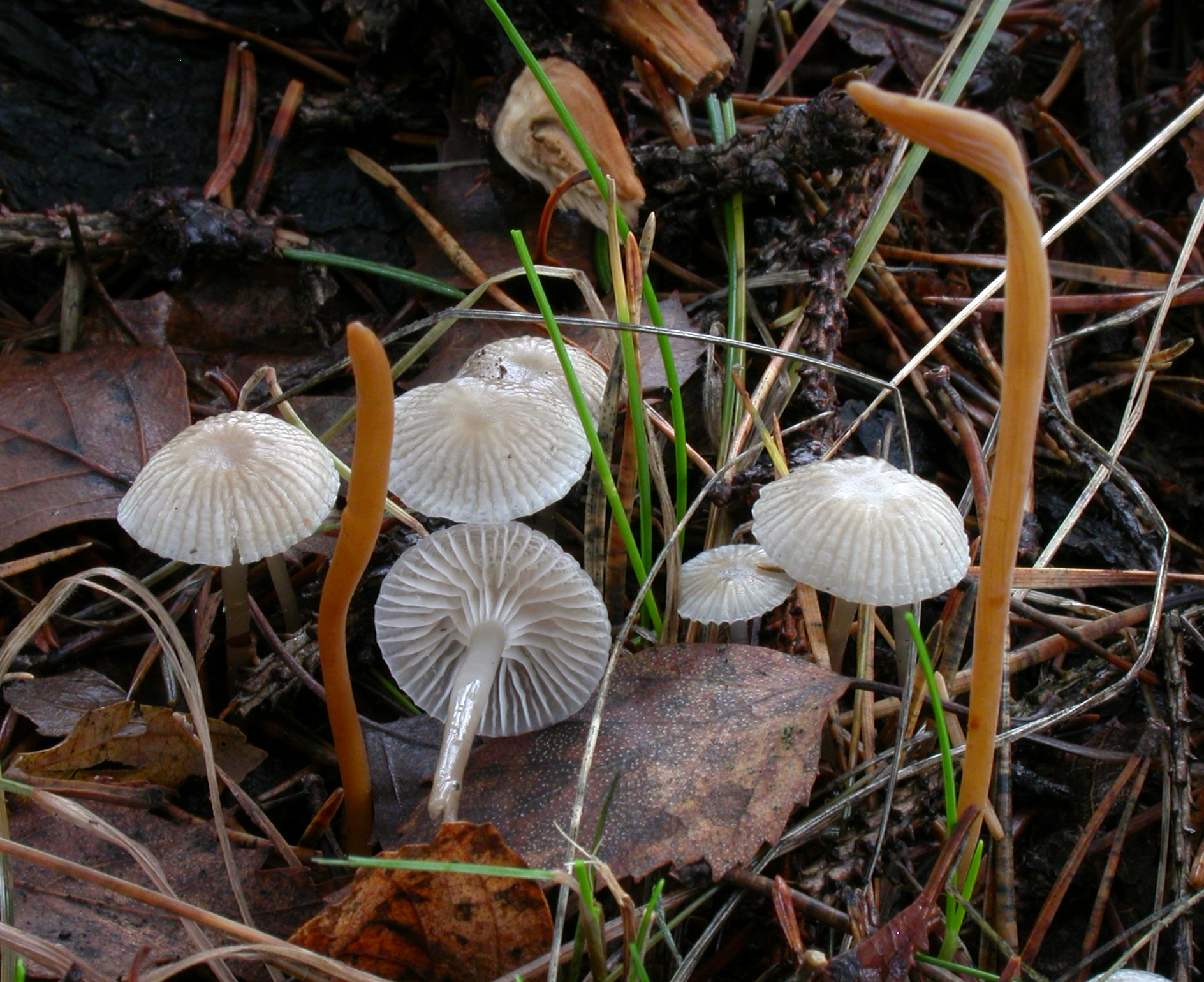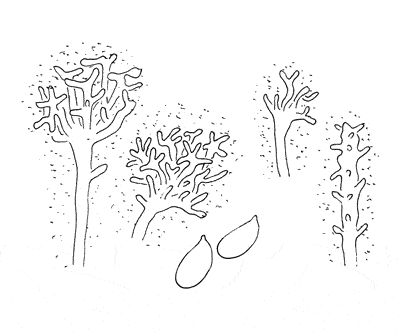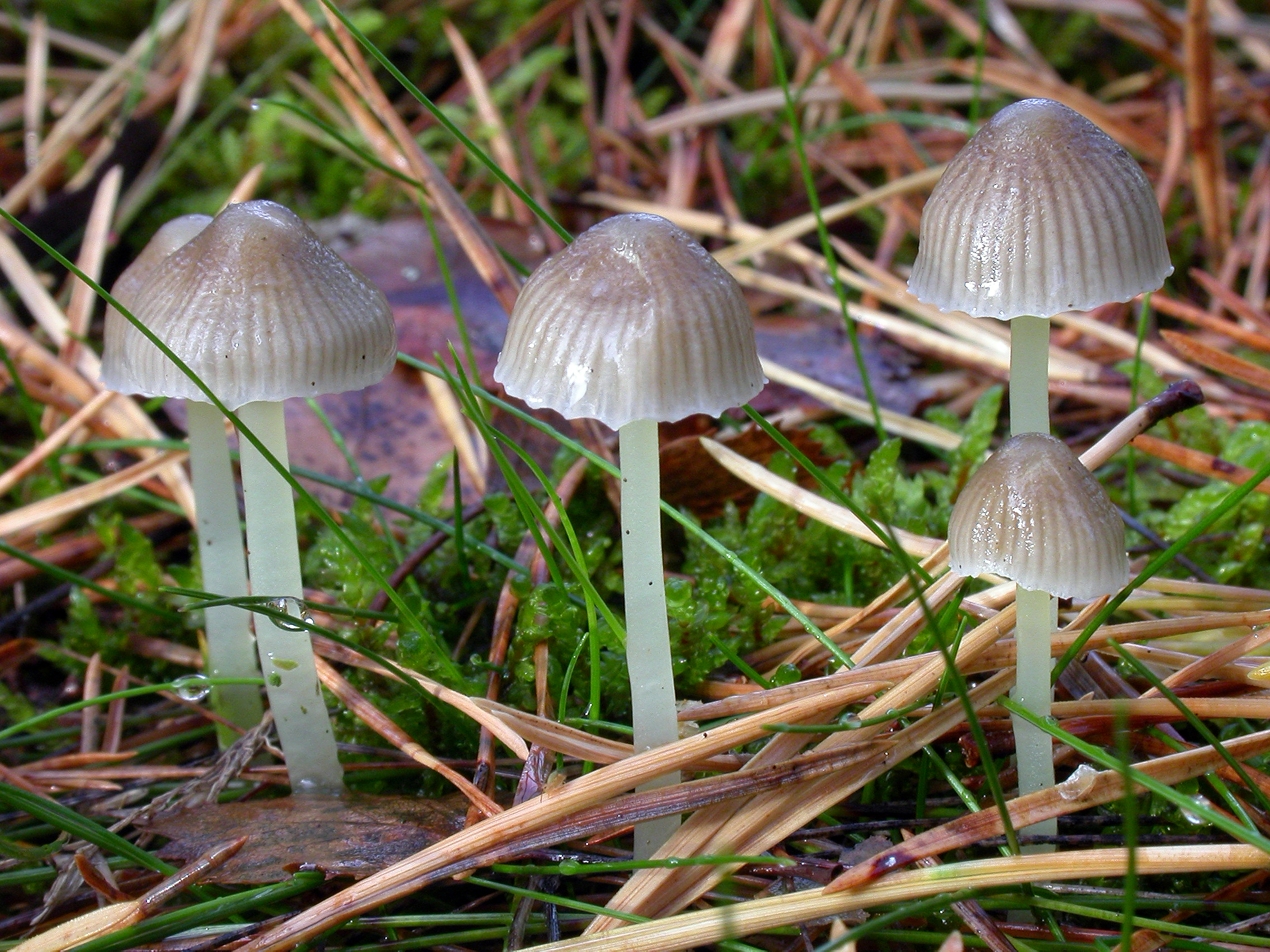Mycena vulgaris
Mycena vulgaris
Description
Cheilocystidia, spores and terminal cell of the hyphae of the cortical layer of the stem.
Cap 5-20 mm across, conical to parabolical or convex, occasionally with a pointed umbo or somewhat depressed, flattening with age, sulcate, translucent-striate, lubricous to viscid, glabrous, covered with a separable, gelatinous pellicle, dark brown at the centre, paler brown to greyish brown towards the margin. Gills 14-25 reaching the stem, arcuate, broadly adnate to decurrent, veined and dorsally intervenose with age, pale grey to pale grey-brown; edge separable as an elastic-tough thread, paler or concolorous. Stem 20-60 x 1-1.5 mm, cylindrical, equal or somewhat wider at the apex, pruinose above, glabrous for the greater part, glutinous to viscid, covered with a separable, gelatinous pellicle, whitish at the apex, grey-brown to fairly dark brown farther below, base covered with long, coarse, whitish fibrils. Odour none or somewhat fruity farinaceous. Basidia 22-33 x 6-9.5 µm, clavate, 4-spored. Spores 7-9(-11) x 3.5-4.5(-5) µm, Q = 1.8-2.2, Qav ˜ 2, pip-shaped, amyloid. Cheilocystidia 18-35 x 2-4.5 µm, forming a sterile band, cylindrical, embedded in gelatinous matter, terminated by much branched, gelatinizing excrescences 2-13 x 1-2.5 µm. Pleurocystidia absent. Lamellar trama dextrinoid. Hyphae of the pileipellis 2.5-3.5 µm wide, smooth or somewhat diverticulate with cystidia-like terminal cells with much branched excrescences, embedded in gelatinous matter. Hyphae of the cortical layer of the stem 1.5-3.5 µm wide, smooth, tortuous, embedded in gelatinous matter, terminal cells densely diverticulate. Clamps present in all tissues.
Ecology and distribution
Gregarious on fallen coniferous needles. Autumn. Widely distributed in Norway.



